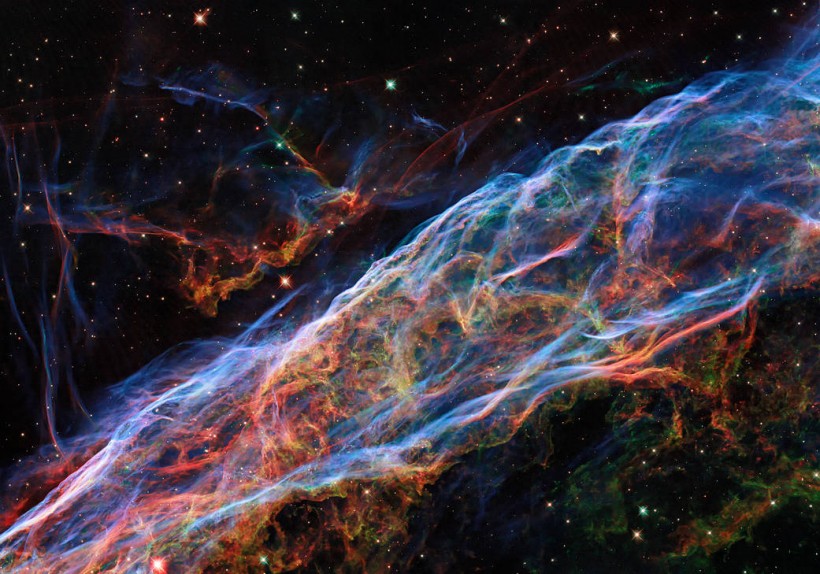The scientists working with the Hubble Space Telescope, which was launched into low Earth orbit in 1990, have released a reworked image of the beautiful Veil Nebula, showing threads of ionized gas winding through space.
Veil Nebula's released image
According to CNET, the Veil Nebula was captured by the Hubble Space Telescope in the past, thus resulting in one of the telescope's most famous image.
The original image was shared in 2015, but since then, image processing techniques have improved to a degree that researchers can use the new processes to find out more information about an older subject.
The researchers ran the original Veil Nebula image through a newer set of image processing filters to show more details in the image that the Hubble Space Telescope captured that were previously invisible.

Astronomers working with the Hubble Space Telescope reworked the infamous image of the Veil Nebula caught by the HST.
Also Read: NASA's InSight Detects Marsquakes; Proves the Red Planet's Source of All Seismic Activities
Hubble scientists wrote in a statement describing that in order to create the colorful reworked image, the observations were taken by Hubble's Wide Field Camera 3 instrument using five different filters.
The new post-processing methods have further enhanced details of emissions from doubly ionized oxygen, ionized hydrogen, and ionized nitrogen.
The Veil Nebula is located 2,100 light-years away in the constellation Cygnus. Even though the nebula is massive, it is just one small part of a much larger formation that is called the Cygnus Loop.
The Cygnus Loop is the remnant that was left over when a star that is 20 times as big as the sun went supernova, exploding outward and ending its life, as per Wion.
The explosion pushed the dusts and gas outward in a massive shockwave, creating the loop. The explosion happened around 10,000 years ago, and the remnant has expanded 60 light-years outward from its original detonation point.
The Veil Nebula is the visible part of the Cygnus Loop, but the photo from Hubble Space Telescope only shows a small portion of it. The delicate filaments of gas visible in the Veil Nebula have made it a common example of the beauty of outer space.
Hubble Space Telescope's other captures
In February 2021, the Hubble Space Telescope captured a pair of Herbig-Haro objects. These objects are rarely spotted in a certain detail and studying them could give clues as to how stars are born and how they evolve.
Each jet of brightness is classified as its own object.
According to Digital Trends, they are located in the constellation of Vela and are more than 1,400 light-years away.
The illuminated shapes form when newborn stars throw off jets of ionized gas, which the European Space Agency or ESA refers to as the tantrums of a baby star.
The jets can intersect with nearby clouds of dust and gas at extreme speeds, thus creating shockwaves that form the objects.
Astronomers observed that the first Herbig-Haro object in the 19th century, though at the time they thought it was a type of emission nebula, which is a cloud of dust and gas that becomes ionized by a nearby hot star.
More objects were discovered, and they were thought to be reflection nebulae, which are could of dust and gas which reflect the light from other stars.
The objects were eventually given their name after the first two astronomers who studied them, Guillermo Haro and George Herbig.
Related Article: OneWeb Is Going Head-To-Head With Elon Musk's Starlink Satellites
This article is owned by Tech Times
Written by Sieeka Khan









